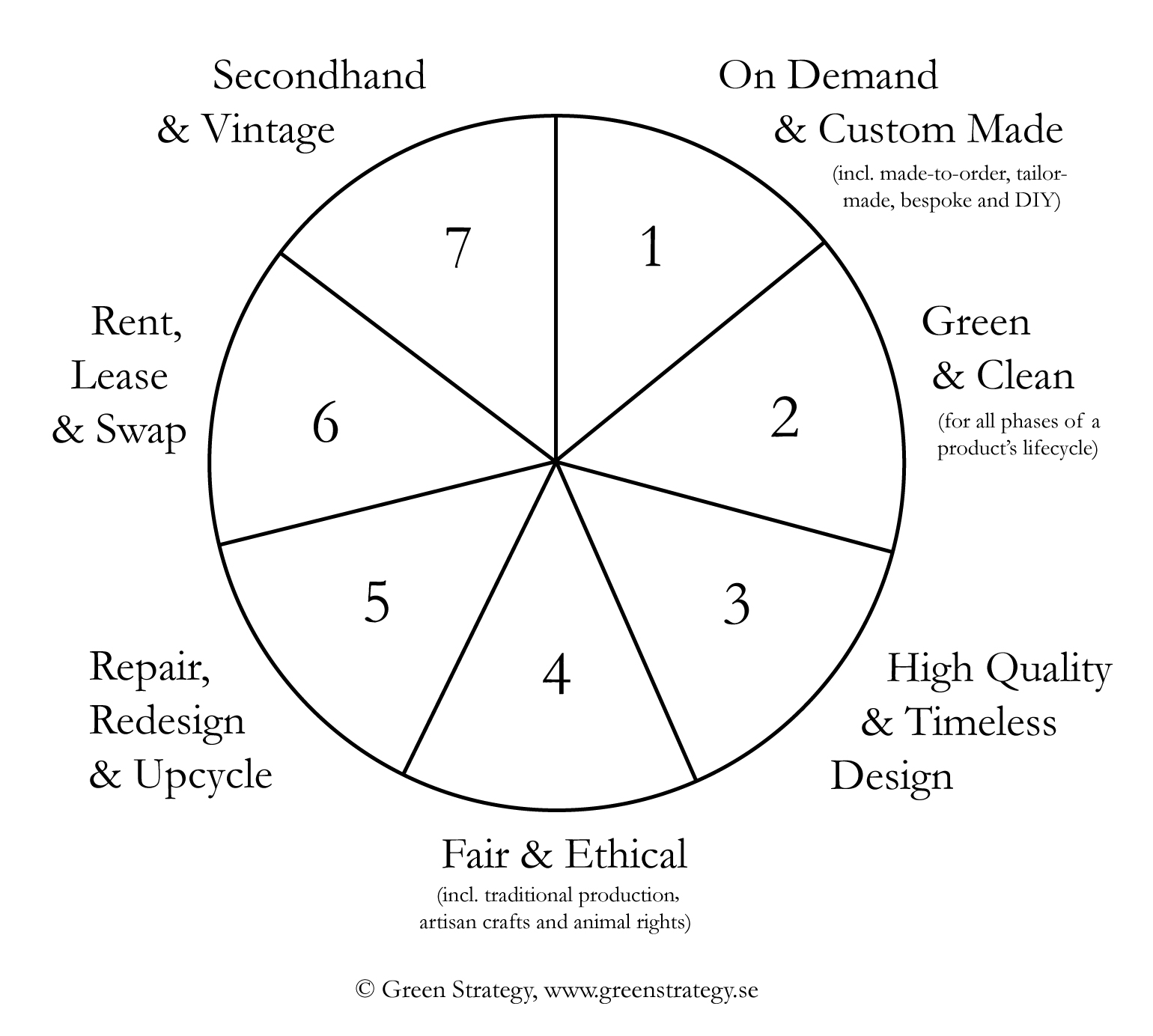Cape Town Sustainable Fashion Week: Highlighting Green Innovations
Cape Town Sustainable Fashion Week: Highlighting Green Innovations
Blog Article
Keep Ahead of the Contour by Exploring Cutting-edge Style Patterns
In an industry as dynamic as fashion, staying ahead involves more than simply following current fads-- it demands an expedition of advancement. Smart textiles, as an example, are transforming garments into useful work of arts, while 3D printing is reinventing style processes with its customizable, waste-reducing capacities. As sustainability becomes a cornerstone, developments like environmentally friendly products and circular fashion practices are improving ecological obligation - Cape Town Sustainable Fashion. Additionally, the convergence of modern technology and fashion proclaims a brand-new age of consumer interaction. Just how, then, can these arising patterns redefine the future of style, and what effects do they hold for brands looking for to prosper in this developing landscape?

Welcoming Smart Textiles
In the last few years, the fashion industry has seen a transformative shift with the assimilation of wise textiles, an innovative development that mixes modern technology with material. This development stands for not just a fusion of appearances and functionality however additionally a significant leap towards sustainability and personalization in fashion. Smart textiles, additionally referred to as e-textiles, installed innovative electronic devices such as sensing units and conductive strings within the material, making it possible for garments to engage with the user or the atmosphere.
These textiles are developed to keep an eye on physical specifications, such as heart price or body temperature, supplying real-time health and wellness analytics. Beyond health and wellness applications, smart fabrics are also being utilized for adaptive clothing, which can alter shade or pattern in action to environmental stimulations, therefore providing a vibrant style experience.
Furthermore, the growth of energy-harvesting textiles that create power from motion or sunshine is leading the way for self-dependent wearable modern technology. This innovation is interesting ecologically aware consumers and designers aiming to lower the eco-friendly impact of fashion. As r & d in this area development, wise textiles are anticipated to come to be progressively widespread, improving the landscape of modern-day fashion with their multifunctional capabilities.
The Surge of 3D Printing
Reinventing the manufacturing landscape, 3D printing has emerged as a game-changer in the apparel industry. This advanced innovation has made it possible for developers to press the borders of creative thinking, creating intricate and customized garments that were previously unimaginable. By leveraging digital design and additive manufacturing, 3D printing helps with the development of complex geometries and patterns, permitting developers to experiment with brand-new textures and frameworks.
A notable benefit of 3D printing in vogue is its ability to produce on-demand, reducing waste and reducing supply requirements. This efficiency not just maximizes production procedures yet also allows for rapid prototyping, allowing developers to bring their visions to life in a shorter timeframe. In addition, 3D printing supports modification somewhat unequaled by traditional approaches, providing individualized fits and special layouts tailored to private customer choices.
The rise of 3D printing has also equalized style, making it accessible to arising designers that can currently make premium items without considerable financial investment in standard manufacturing framework. As modern technology proceeds to advance, the fashion business is poised to harness the complete potential of 3D printing, discovering new materials and strategies that will definitely redefine just how style is developed and created.
Sustainable Fashion Innovations
As the garment industry comes to grips with the pressing demand for ecological duty, lasting fashion technologies have actually arised at the leading edge of transformative change. The expanding recognition of eco-friendly influence has fueled a shift in the direction of even more eco-conscious techniques and products. Developers and brand names are now focusing on sustainability, integrating approaches that minimize waste and lower carbon footprints.
One substantial development is the surge of round fashion, which find more information stresses recycling and upcycling to extend the lifecycle of garments. This strategy not just minimizes waste however also urges customers to adopt a more conscious method to garments intake.
An additional innovation exists in the adoption of innovative dyeing methods that utilize waterless procedures or natural dyes, thereby lowering the large amounts of water and chemicals traditionally used in fabric dyeing. Furthermore, improvements in biotechnology have resulted in the development of lab-grown leather and materials, offering cruelty-free and eco-friendly alternatives to conventional materials. Via these introducing efforts, the fashion sector is making purposeful strides towards a much more lasting future.

Tech-Integrated Clothing
Tech-integrated garments represents a cutting-edge fusion of fashion and technology, improving exactly how individuals connect with their clothing. This innovative domain name is noted by the incorporation of wise fabrics and ingrained digital elements, improving both performance and aesthetic appeal. From health and fitness trackers embedded in sports apparel to heated coats managed through smartphone applications, tech-integrated apparel offers customers unmatched convenience and versatility.
Pioneering brands are driving this fad, focusing on producing garments that reply to environmental stimulations or individual commands. For example, some garments can transform shade or pattern in response to temperature level shifts, while others include biometric sensors to monitor wellness metrics like heart rate or stress degrees. The smooth assimilation of modern technology right into fabrics likewise encompasses environmental sustainability, with efforts to develop self-cleaning fabrics or garments that get used to weather problems, thus decreasing the requirement for multiple layers.
In addition, the introduction of wearable technology is not just limited to apparel but reaches devices like watches and glasses, further expanding the extent of tech-integrated style. As the market proceeds to introduce, the potential for personalization and personalization in apparel expands, using customers special, tech-enhanced fashion experiences that satisfy their individual demands and choices.
Future of Virtual Fashion
In the last few years, the future of digital fashion has actually become a transformative force within the sector, leveraging improvements in digital modern technology to redefine i loved this just how style is produced, experienced, and taken in. By incorporating enhanced fact (AR), online fact (VR), and 3D style devices, designers can currently craft immersive and interactive experiences that transcend traditional fashion limits. Virtual fashion allows for the creation of garments that exist only in electronic environments, supplying countless possibilities for innovation without the constraints of physical production.
This digital change not only offers possibilities for imaginative expression but also addresses sustainability worries intrinsic in typical fashion practices. Cape Town Sustainable Fashion. By eliminating the requirement for physical sources, online fashion reduces waste and reduces carbon impacts. Furthermore, the surge of online style lines up with the increasing customer need for customized and one-of-a-kind experiences, as online garments can be tailored and tailored to specific preferences with ease

Verdict
The fashion market's get more future lies in the assimilation of lasting methods and innovative technologies. Virtual style is poised to redefine consumer interactions.
In recent years, the fashion market has observed a transformative shift with the combination of wise textiles, a sophisticated technology that blends technology with material.As the fashion sector grapples with the pushing requirement for ecological duty, sustainable fashion technologies have arised at the leading edge of transformative modification.In recent years, the future of virtual fashion has actually emerged as a transformative pressure within the industry, leveraging advancements in digital technology to redefine just how fashion is produced, experienced, and eaten. The surge of digital style aligns with the increasing customer demand for customized and unique experiences, as digital garments can be personalized and customized to specific choices with ease.
The fashion sector's future lies in the assimilation of ingenious modern technologies and sustainable practices.
Report this page